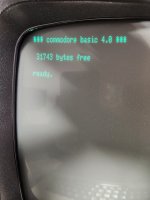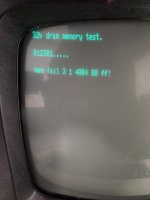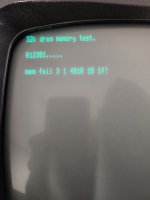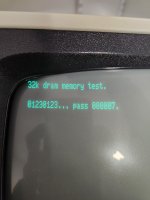daver2
10k Member
Ah yes, I think upper case may not be permitted - but it is very weird that it did what it did! Let's leave that interesting fact for another day shall we. Let's squash one bug at any one time...
EDIT: It is all answered here: http://www.primrosebank.net/computers/pet/software/pet_sw_files.htm. This is the 'correct' behaviour! You can switch to upper case and graphics by typing the immediate command "print chr$(142)" - but then you loose the lower case characters - but you can now enter the graphics characters...
We already suspect that the first byte of the second bank of 16K of memory didn't work correctly - otherwise my PETTESTER would have detected valid memory there...
If you want to modify the program as follows:
135 input z$
140 goto 50
This will allow you to note down the error and then hit <CR> to perform the next test with the next test value.
Let's see if we have a consistent 'stuck value' shall we...
Already I am suspecting data bit 0 stuck at 0... But that is a poor statistical significance in 1 out of 1 test though.
Dave
EDIT: It is all answered here: http://www.primrosebank.net/computers/pet/software/pet_sw_files.htm. This is the 'correct' behaviour! You can switch to upper case and graphics by typing the immediate command "print chr$(142)" - but then you loose the lower case characters - but you can now enter the graphics characters...
We already suspect that the first byte of the second bank of 16K of memory didn't work correctly - otherwise my PETTESTER would have detected valid memory there...
If you want to modify the program as follows:
135 input z$
140 goto 50
This will allow you to note down the error and then hit <CR> to perform the next test with the next test value.
Let's see if we have a consistent 'stuck value' shall we...
Already I am suspecting data bit 0 stuck at 0... But that is a poor statistical significance in 1 out of 1 test though.
Dave
Last edited:






